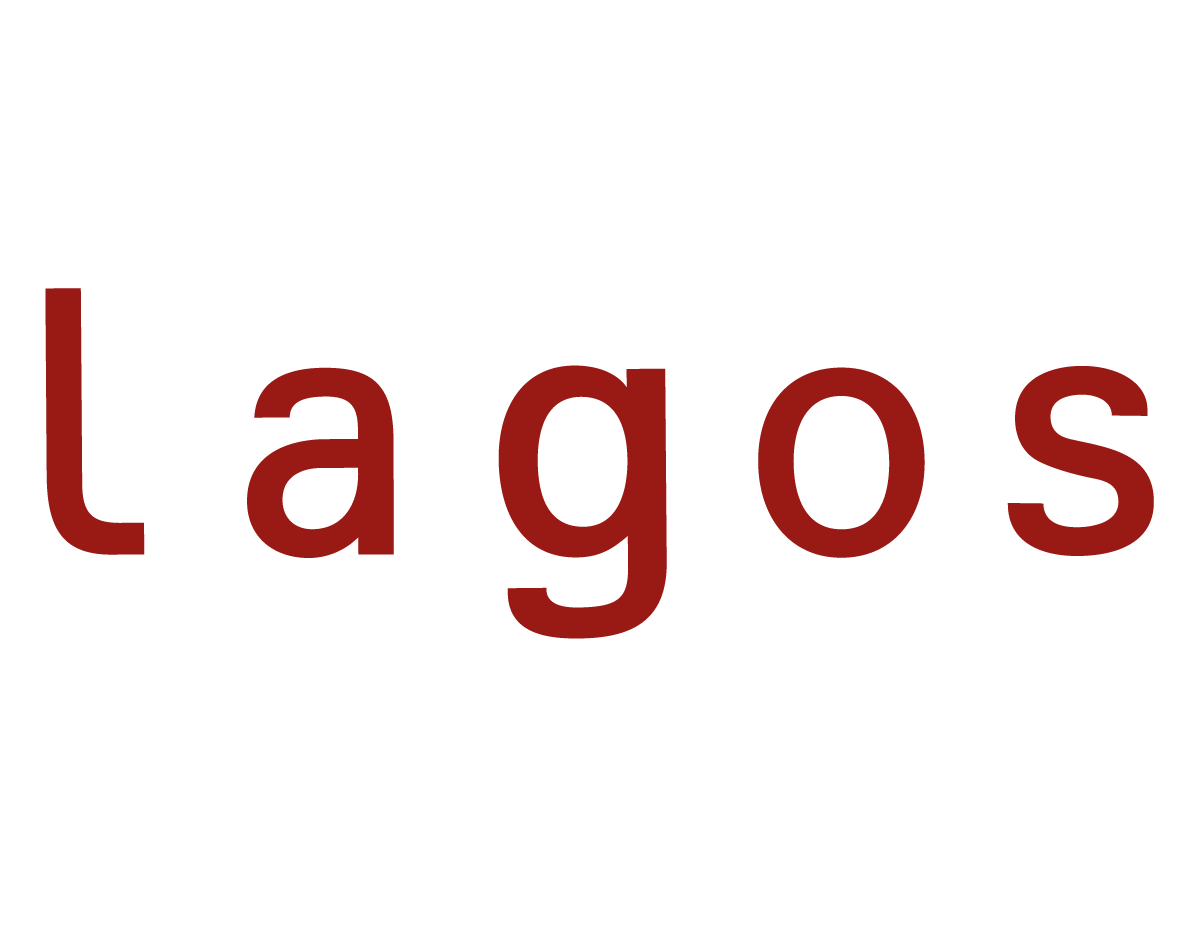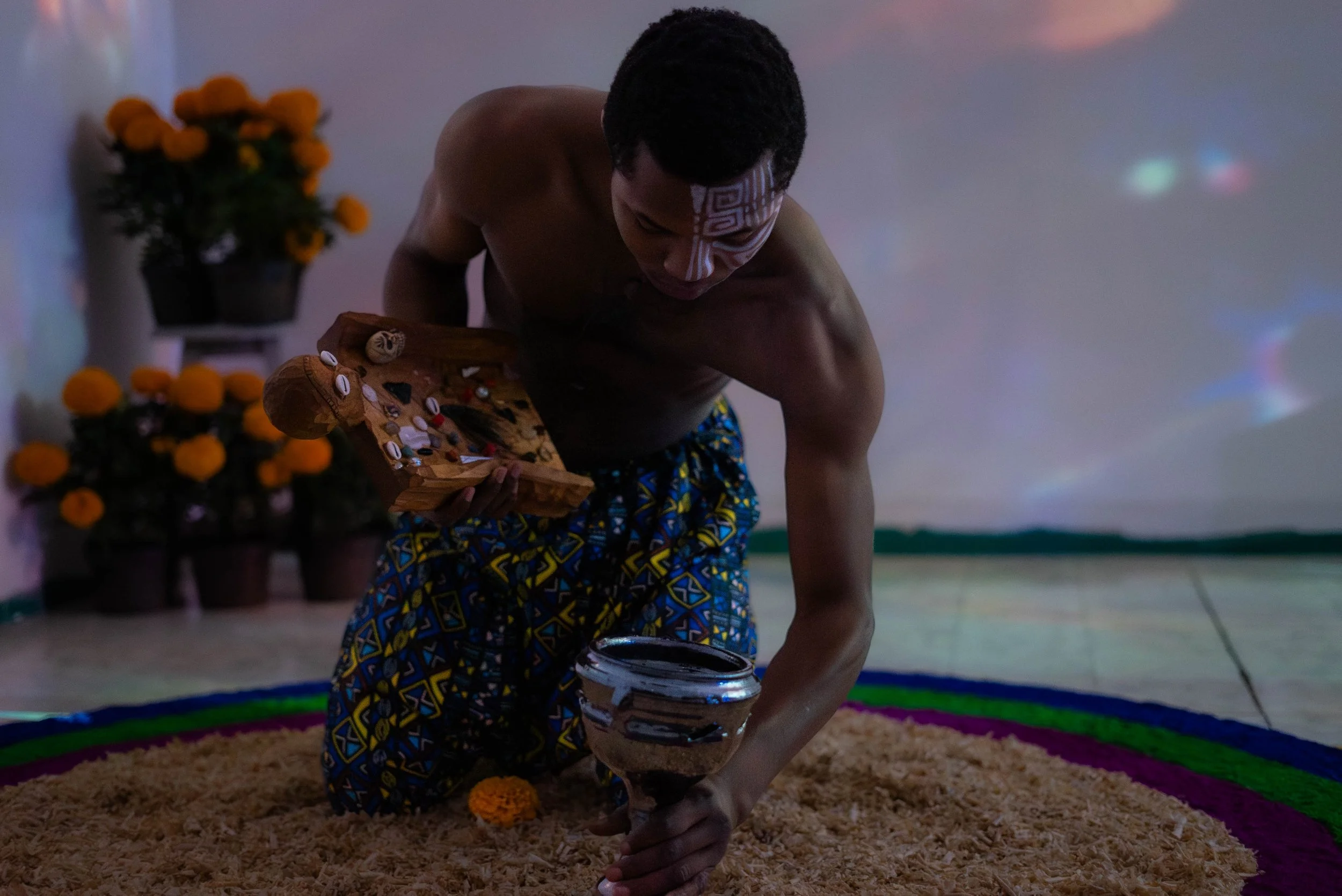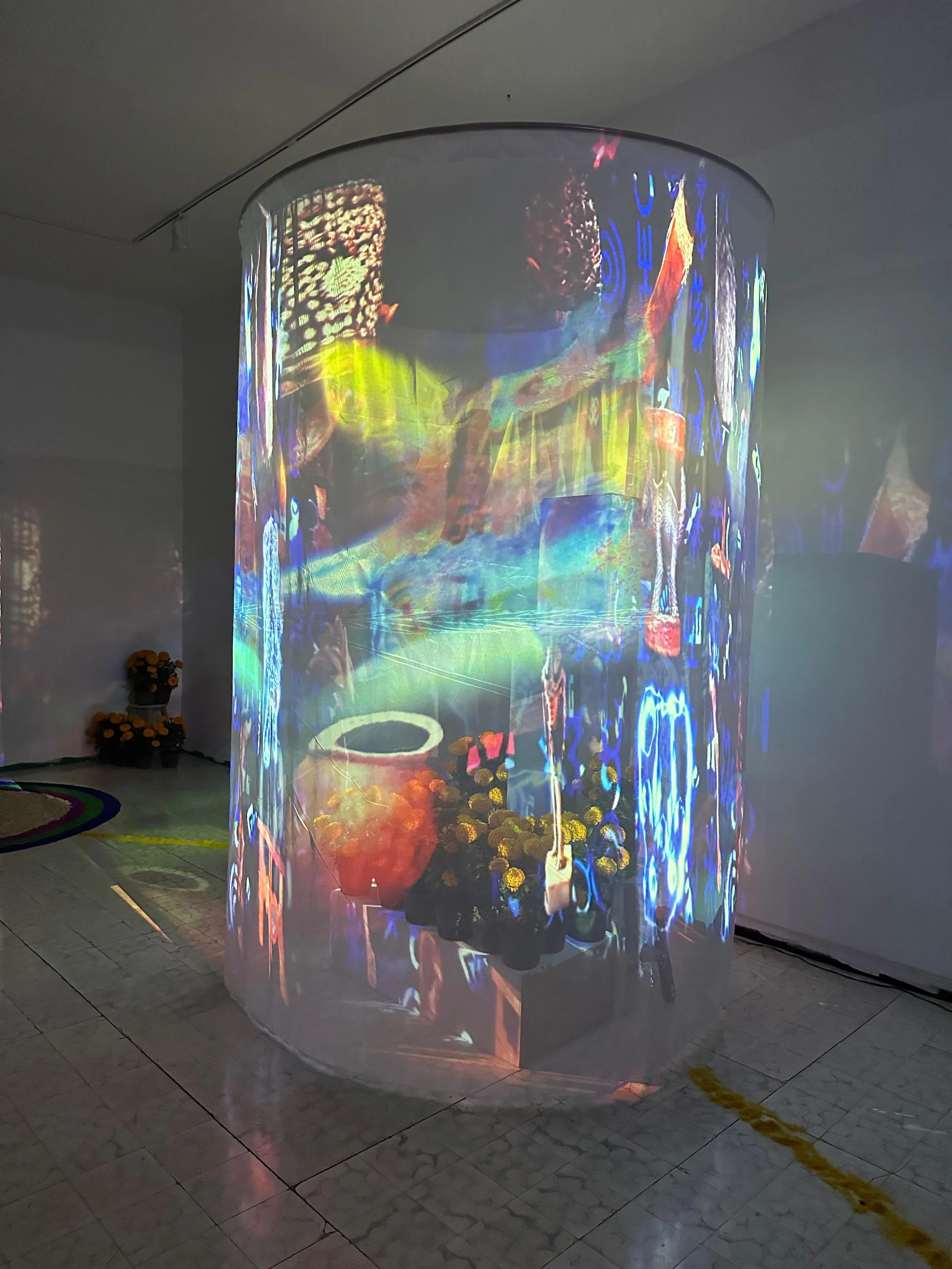RESIDENT 2024
David Odiase
NIGERIA
DECOLONIAL POETICS
During David’s stay in Mexico, I was able to connect with one of my roots and, through that, understand other possibilities for transcending the wounds of slavery and the atrocities inflicted on my Blackness. Knowing myself beyond simply not being white has been a lifelong relief. I am a woman with different roots, and David’s presence in the curatorial exercise we carried out was a reconnection and consolidation of one of my origins. Thank you.
David Odiase’s work is brutally brilliant—with subtlety and profound strength, it transcends the colonial wound, showing us possibilities for recovery and reorganization through intelligent rage. With spirit and awareness, he uses the full potential of harm and fuses it with the vigor of ancestral genealogy, to elevate and connect in the subtle—which in him is the profound—with a sense of belonging rooted in an essence scattered across the five directions of the planet. In this way, it is a form of recognition (of oneself) and a revelation (to us) that Africa is present in every corner where it was taken by force and violence. And that the power of poetics, connected to all levels of the human body (physical, transcendental, cultural, magical, emotional, and unconscious), is a powerful path for redressing colonial damage.
The work David developed in Mexico, titled IN MY MOTHER TONGUE THERE ARE NO HORCRUXES, was an immersive installation based on principles of particle physics and ritual; anchored in stories, spirituality, and African Indigenous principles surrounding animism, ancestors, kingdoms, and time, to create a quantum ceremony for the soul. Traditional African belief systems, deeply rooted in animism, hold that everything has a soul. Here, the soul is allegorized in artifacts; these are tangible and intangible cultural heritage, human remains dispossessed and now located in display shelves and museographic furniture in Western colonial museums.
With perhaps a naïve interest in recovering the artifacts—objects taken from Africa during Euro-American punitive expeditions—David approaches the museums that house them and claims them back. These are objects broken from their origin. The museums respond that they cannot send the objects because they belong to them—a highly questionable stance—and to their answer they attach extremely detailed digital files, high-quality 3D scans. In other words, David recovers the objects immaterially. This line of connection aligns well with David’s temperament: poetry, idea, metaphor—the invisible made visible through the verb—sparking in him the possibility of reconnecting, of bringing back to origin, to culture, to the torrent of African life, those objects, in order to heal through the quantum principle of time, the soul fissure in the world of the living, the unborn, and the ancestors.
In the artist’s words:
“The piece can be considered a reevaluation of futurisms in which science can collaborate with African Indigenous belief systems in their understanding of the world. A world where science and its institutions are no longer tools of racial machination, but a world where everything leans toward reparation, justice, healing, and symbiosis.”
In response to the museum’s digital files, David creates a project and proposes it to the International Goethe-Institut, under a call related to the immaterial and the digital, called Studio Quantum. David receives support, and the Goethe-Institut Mexico is designated to manage and coordinate the logistics. They are the ones who reached out to us to carry out David’s two-month residency at Lagos, which for us was a wonderfully fortunate opportunity for connection. Although it may seem unthinkable—laden with political complexity—since: What is an African doing in Mexico with German funding? This support could be read as a gesture of atonement and appropriation—and it does carry that nuance—yet it is also a door to connection and, therefore, transformation.
Beyond that, there was the luminous possibility of Africa’s current connectivity in Mexico. During David’s fabulous stay, we connected as professionals, got to know each other personally, and traveled together to Querétaro to visit the exhibitions of the current residents; building a strong bond with Marisa Maza, a Spaniard based in Berlin, which turned out to be very beneficial for David, as it allowed him to connect with her friends and ease his arrival to his next residency, which is now in Germany.
In the Mexican context, David created a brilliant performative piece. In it, he connected the soul layers of the artifacts with Mexico through video mapping, projecting onto elements of the Day of the Dead ritual and the audience’s consciousness of observation. At a central altar, with appropriate levels, paths of sawdust, marigold flowers (cempasúchil), and the holographic 3D artifacts, they were present as visual triggers for the attending audience, who, as living witnesses offering the cultural love we have for the Day of the Dead, enabled the “familial” flow of essences. The connection to the dimension/place in which the immaterial substances of the artifacts reside—those displayed in European museums—was summoned by dance, poetry, and songs that David performed, along with the November energy of All Saints Day in Mexico, where the intangible becomes present and the connection between worlds manifests. This transcolonial poetics emerged in the SOMA space in San Pedro de los Pinos, Mexico City, giving us the possibility to find reorganization across so many layers of harm and to glimpse a causal sense of affective understanding.
olgaMargarita dávila
Chief Curator
.











